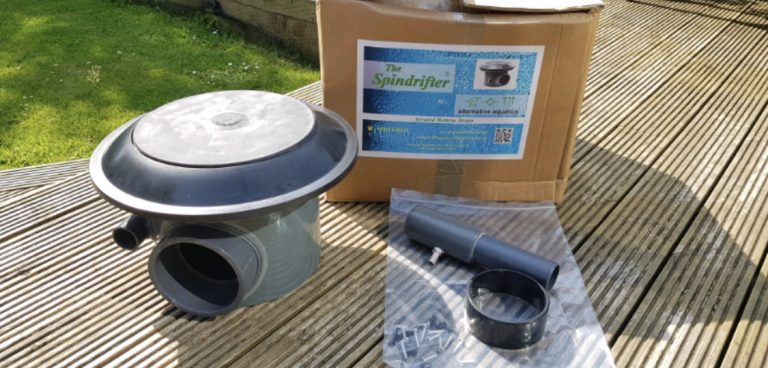
If you are new to Nishikigoi (Koi) and thinking about a pond, the subject of filtration can perhaps appear a little daunting when it really need not. The two current principles of pond filtration can be broken down to Gravity Fed and Pump Fed. I have created two simple diagrams showing these; one relies on gravity and external or 'dry mounted' pump(s), and the other relies on a pump sited in your pond.
Rapid removal of solid waste is what you are aiming for.
Any solid waste left in your environment for long periods will cause problems, work to the principle of removing fish waste as quickly as you can. In order to facilitate this rapid removal, we would ask that you look at a gravity-fed system incorporating a bottom drain(s).
When it comes to Nishikigoi with their voracious appetite, growth rates and waste production, a pump-fed system is the least attractive option. The pump sits in the pond and it will macerate all waste (from the pond) sending it back to your filter. Over time this may cause a build-up of fine particles which become tricky to remove (why you sometimes see hobbyists using filter wool near filter outlets).
There can of course be other reasons for fine particles (fines) in your pond, perhaps you are turning your pond over too quickly. Always check the manufacturer's recommended flow rate and less (flow) can actually be more.
Gravity fed systems running on a bottom drain rapidly move 'whole waste' via the 4" drain (to the mechanical filtration stage).

Note the 4" ABS connection and integrated airline attachment on the sump body. The integrated ABS airline allows you the choice of using the Spindrifters 'vacuum' or 'spin' effect. Air (from your air pump) is rotated via the membrane into your pond, this effect 'pulls' or 'spins' waste towards the sump. There are a number of other manufacturers of bottom drains using the same sump and airline principle.
You now understand the two filtration principles so let's introduce the two important filtration stages; mechanical and biological. I mentioned mechanical previously and this covers the solid waste removal stage - something or someone mechanically removing the solid waste! I will use drums in all examples as I believe they offer the most effective mechanical removal of solids.
I do appreciate the expense however the ease of maintenance alongside the multitude of installation options they provide, make them an attractive choice.
If you think about a drum screen collecting waste as water passes, the screen will become blocked dropping the water level. Probe(s) are now above the water line triggering a cleaning cycle, spray nozzles do their job removing solid waste via the drum's waste chute - drum cleaning cycles depend on the pond environment but that quick and regular solids removal is exactly what you want.
Drum cleaning cycles can range from every 10/15 minutes to over an hour (flow/stocking/feed dependent). Drum manufacturers now offer the ability to pre-programme cleaning cycles providing even greater flexibility. Prior to drum filters, large multi-bay filters were employed and to some extent still are.
These usually incorporate a vortex which initially allows anything solid to settle, solids are manually flushed to waste. More recently you will have seen these large multi bay's converted to hold other media (improving biological ability). Other filtration manufacturers still utilise this 'settle out' approach, prior to moving water through further biological stages. It's all well and good quickly removing solid waste but what about the leftover by-products, enter the biological stage.
This is an area(s) within your filtration that provides the right conditions for bacteria to form and over time multiply. Your pond environment should be looked at as an ecosystem and MBRs (moving bed reactors) provide a home for certain bacterial colonies, building blocks for good water and a healthy system.
Why MBR?
This container or vessel provides the optimum conditions for a microbial reaction to occur. Bacteria form (e.g. Nitrosomonas) and colonies of these bacteria given the right (anaerobic) conditions create a biofilm within the media in the vessel. You don't need to 'boil' MBRs, fairly rough aeration is required which removes dead bacteria promoting new growth.
Water passes via the drum screen into the moving bed, your colony of bacteria then get to work removing the by-products from the mechanical stage. These by-products are in reality how these bacteria live and 'breath' - you may be familiar with the terms nitrification and denitrification. (Nitrogen Cycle). Pumps return water (via showers or other returns) maintaining the continuous filtration cycle.
I hope this goes some way to giving you a better understanding of the four principles; gravity-fed, pump-fed, mechanical and biological.
If there is anything that you also feel influences Nishikigoi and their understanding, get in touch via chairman@bkks.co.uk